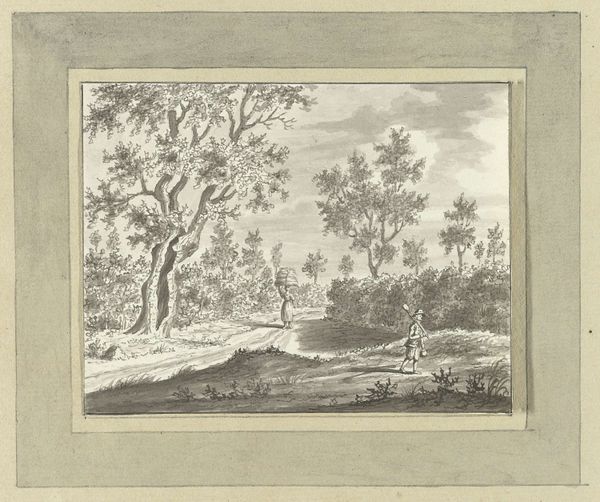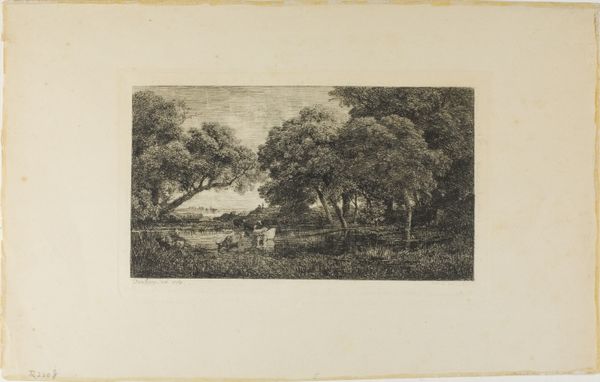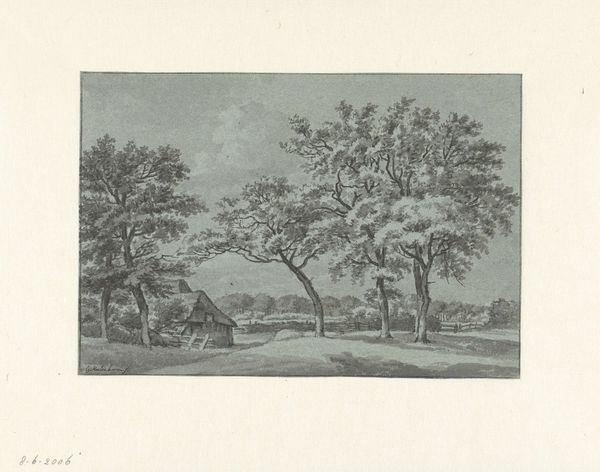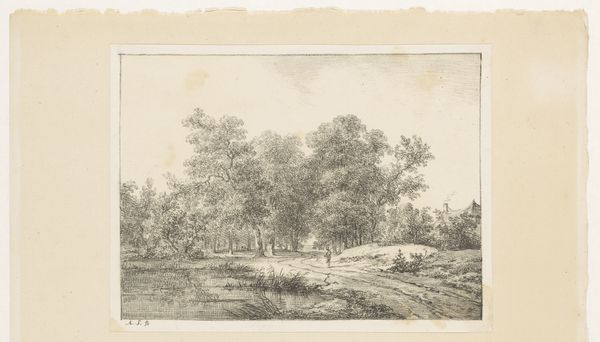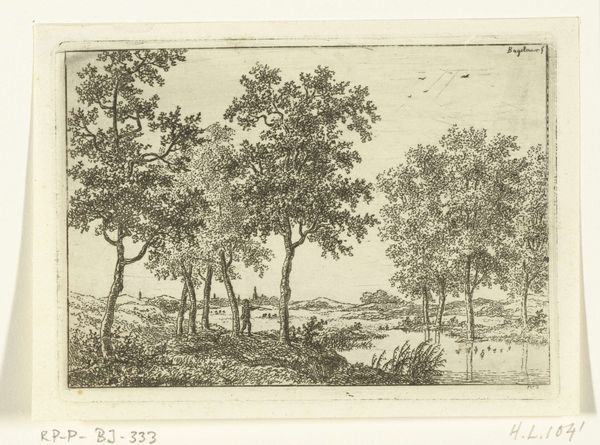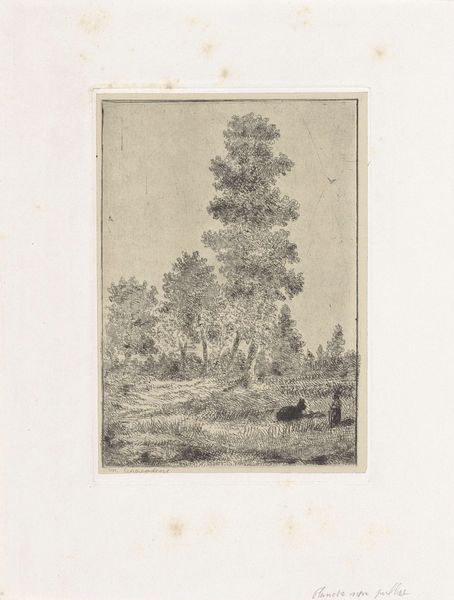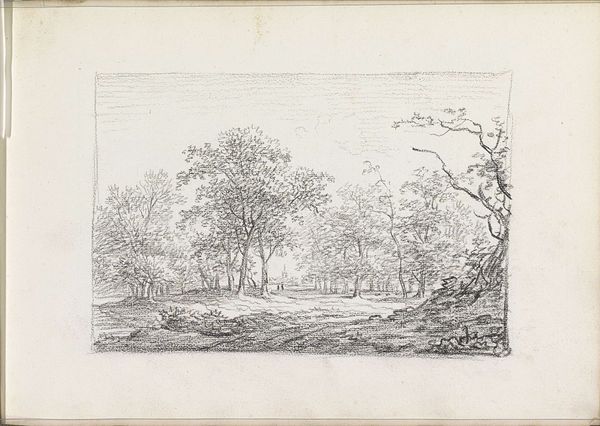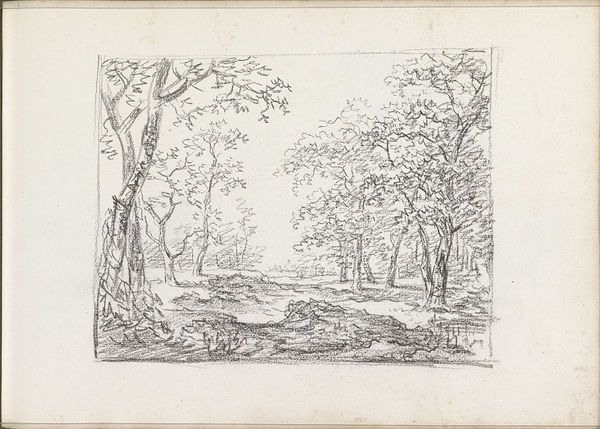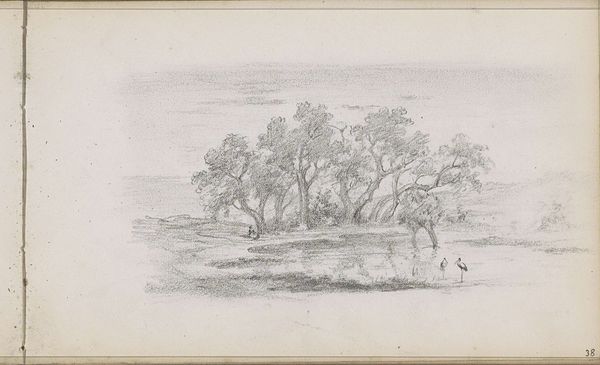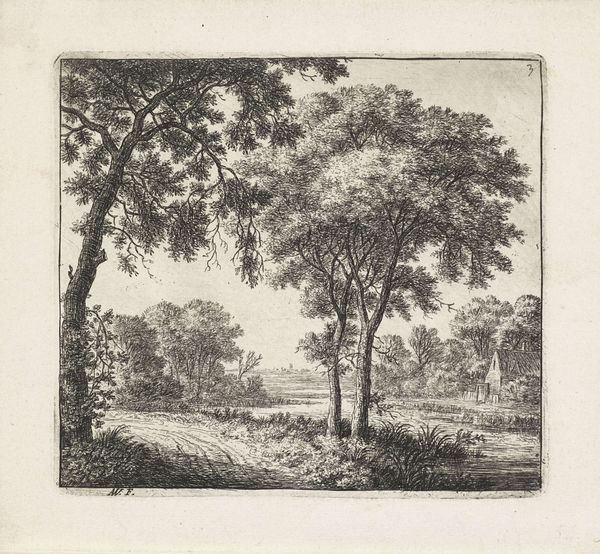
drawing, paper, ink
#
drawing
#
landscape
#
paper
#
ink
#
romanticism
Dimensions: height 85 mm, width 110 mm
Copyright: Rijks Museum: Open Domain
Curator: We’re looking at “Landschap bij Nassau Usinge,” a landscape drawing by Ernst Willem Jan Bagelaar, dating back to 1801. Editor: It’s a quiet scene, isn't it? Almost meditative. The grays and blacks give it a serene, almost dreamlike quality, but there's an unsettling hint of a flat, dull middle-ground that seems strangely vacant of meaningful elements. Curator: Vacant, perhaps, but consider the cultural backdrop. It's early 19th century; Romanticism is blooming. The scene speaks to an idealized nature. Do you see the lone figure under the tree? Almost a hermit in the shadows. This is a reflection of the self in nature, a search for inner peace that echoes the changing philosophical times. The trees themselves form a symbolic gateway. Editor: True, there's a search for peace—an idealized rendering but let’s look at the actual drawing. Bagelaar created it using ink on paper. The marks and textures reveal a highly crafted process and perhaps that explains the sense of remove and constructedness I felt. We must recognize this as a designed view of the world. I wonder about the source of the ink. The color indicates possibly oak gall or walnut. This was an alchemic concoction for writing and illustration. What can you infer from the drawing given the tools he chose to produce it? Curator: Interesting. I see your point about designed experience because it resonates in broader contexts. Consider the act of 'usinge’ a landscape, the control the artist can imagine within its open frame to build cultural narratives about nation, progress and individual emotion. I would ask, however, if the viewer would appreciate his drawing more when reminded of its romantic idealization through subtle design decisions or if they reflect critically about the politics embedded within each work through the traces and tools the artists deploy. Editor: I tend toward considering the role of cultural practices through means of making. Understanding the process opens questions and invites new insights beyond surface interpretations of emotion. Curator: Both interpretations build towards fuller understandings of what is shown to us. This piece, seemingly simple, ends up revealing such complex layers of both inner life and outer world control. Editor: Indeed. Each tool used shapes both intention and experience. It’s in this synthesis that art and the material world speak.
Comments
No comments
Be the first to comment and join the conversation on the ultimate creative platform.
